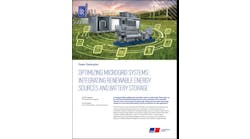By Elisa Wood
June 26, 2008
Energy efficiency creates an odd sort of market. Nothing (lack of energy use) competes for customers against something (energy generation).
There is no free lunch and even nothing, energy efficiency, costs something. But for now it is cheaper than its main competitor, the power plant.
In fact, it is often three times less costly to install efficient light bulbs, better insulate buildings or pursue other forms of efficiency than to buy power. Specifically, energy efficiency costs about 3 cents/kWh compared with the 9 cents/kWh it takes just to cover fuel costs from a baseload gas-fired generator, according to a June 19 presentation on power prices by the staff of the Federal Energy Regulatory Commission http://www.ferc.gov/legal/staff-reports/06-19-08-cost-electric.pdf.
Given its cost competitiveness, efficiency is increasingly called upon as a “first fuel.” A growing number of states require that utilities use as much efficiency as possible – reduce consumption as much as possible — before building new plants or signing power deals.
As a result, the energy efficiency business is booming. And it is beating power plants as the favored alternative not just because it is cheaper; it also is cleaner, and consumers like it better. As Suedeen Kelly, FERC commissioner, said: “There is decreasing enthusiasm for building and an increased enthusiasm for demand-side resources.”
Indeed, since January 2007, 50 coal plants have been canceled or postponed; only 26 remain under construction. Meanwhile, state after state revamps energy policy to make efficiency a priority. The potential exists for the US to have an economy by 2030 that is 70% larger than today’s, but uses no more energy than it did in the mid-1990s, according to the American Council for an Energy-Efficient Economy http://www.aceee.org/tstimony/Laitner%20Senate%20Testimony%20June%2025%202008.pdf.
Of course, at some point the nation must build new power plants to meet growing demand. Nothing cannot replace something forever. A growing economy needs energy.
So, how long will the efficiency industry boom? How long will efficiency hold this favored position in the marketplace? That’s not easy to answer. But one thing seems apparent. Energy prices are not going down any time soon. The FERC report warned that we appear to be at “the beginning of significantly higher power prices that will last for years.” If this proves true, energy efficiency’s run as the favored fuel has just begun.





